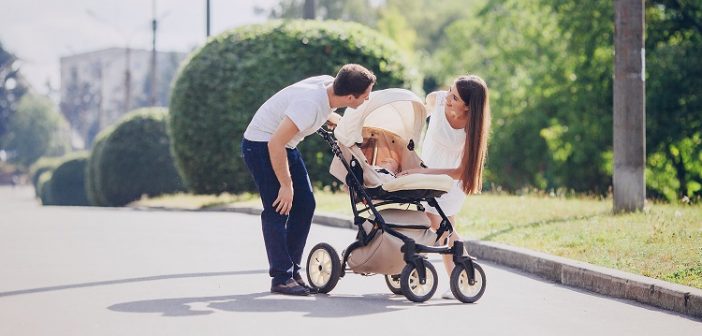Pregnancy is a rollercoaster, but there’s nothing better than the final delivery. When you’re holding that baby in your arms, everything you went through for the last nine months is so worth it.
But unfortunately, that’s not the end of it. You have several physical changes to your body to “look forward to.”
- Hair Loss
The majority of women experience changes to their hair growth following birth. For a few, it involves thicker, luscious locks. But for most—90 percent—it usually means losing large amounts of hair.
“Not all women will experience this condition, and some may experience it in one pregnancy but not another,” says David Salinger, the Australia-based director of the International Association of Trichologists (doctors who study scalp and hair issues).
Unfortunately, many women who experience hair loss develop embarrassing bald spots. One mom told Dr. Salinger, “I ended up wearing headbands, and strategically parted my hair to cover bald spots. I even used hairpieces at times.”
Thankfully, the hair will usually grow back, and, in the meantime, there are plenty of hair loss solutions that will stimulate the growth and repair of bald spots. Mild thinning can usually be fixed with follicle-stimulating shampoos and more serious bald spots can be fixed with hair caps that reverse hair loss.
- Stomach Changes
Your once firm skin around your stomach is no more. After giving birth, the skin around your tummy changes quite a bit, a tell-tale sign that you’ve given birth. First of all, you have stretch marks to look forward to. Creams and lotions can help reduce these marks, but moms can’t escape them forever.
The skin will be more elastic as well, particularly during the first six weeks following birth. Stretches and exercise will diminish this stretchiness, but it probably won’t go away completely.
- Larger Breasts
Although a few women experience a smaller cup size after pregnancy thanks to hormonal changes, the vast majority will grow. This is thanks to the natural phenomenon of milk production, which occurs in your body even if you ultimately choose not to breastfeed. You’ll notice larger breasts near the beginning of pregnancy.
“Almost from the moment of conception, a woman’s body starts preparing to breastfeed,” Sharon Mass, MD, told Parents.com. “Many women notice changes to their breasts even before they miss a period.”
The breasts will enlarge more if you’re breastfeeding. “Immediately after the placenta is delivered, your body begins to release the hormone prolactin to signal to your breasts that it’s time to make milk,” explains Dr. Mass. “The breasts are further stimulated by the baby’s sucking.”
Your breasts may decrease in size slightly after you’ve weaned your baby off your breast milk, but they will likely remain larger than your original cup size.
- Skin Discoloration
Your skin is the largest organ in your body. As such, it is often a visual demonstration of what’s happening inside your body, thanks to the many hormones women possess. When you’re pregnant and deliver the baby, your hormones go crazy, and the skin often shows off the chaos within. The resulting changes are often known as the “mask of pregnancy.”
Many women develop a tan-colored area around their eyes and “sun spots” on the rest of their body. You might also develop acne or experience a rash or eczema. Most women, thankfully, eliminate these uncomfortable symptoms after they’ve delivered their baby, but some experience discoloration and other skin problems as a permanent side effect of pregnancy.
- Varicose Veins
One of the most disheartening symptoms of pregnancy is varicose veins. This is classified as an increase of blood in certain veins (usually around your calves) that make them look dark and bruised.
Varicose veins can be treated to reduce or eliminate their appearance on the exterior dermis. However, note that if you’ve had varicose veins at some point in your life, you’re genetically predisposed to have them again in the future.
If you develop varicose veins, the BabyCenter Medical Advisory Board warns: “Don’t confuse superficial venous thrombosis with a serious condition called deep venous thrombosis (DVT), in which clots develop in the deep veins, usually in the legs.” DVT can lead to heart attack and stroke, so it’s important to have enlarged veins checked out to make sure they’re harmless.




